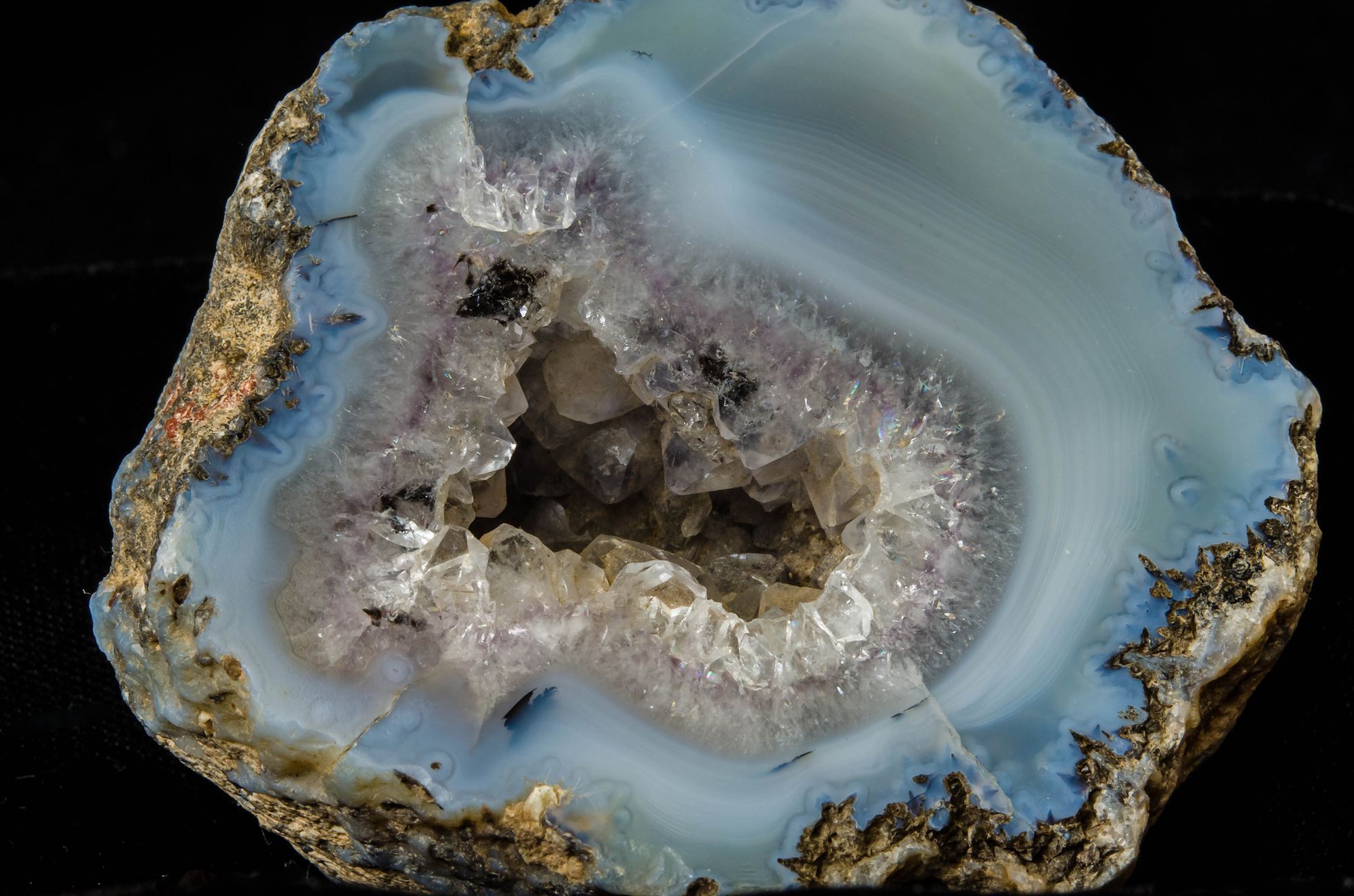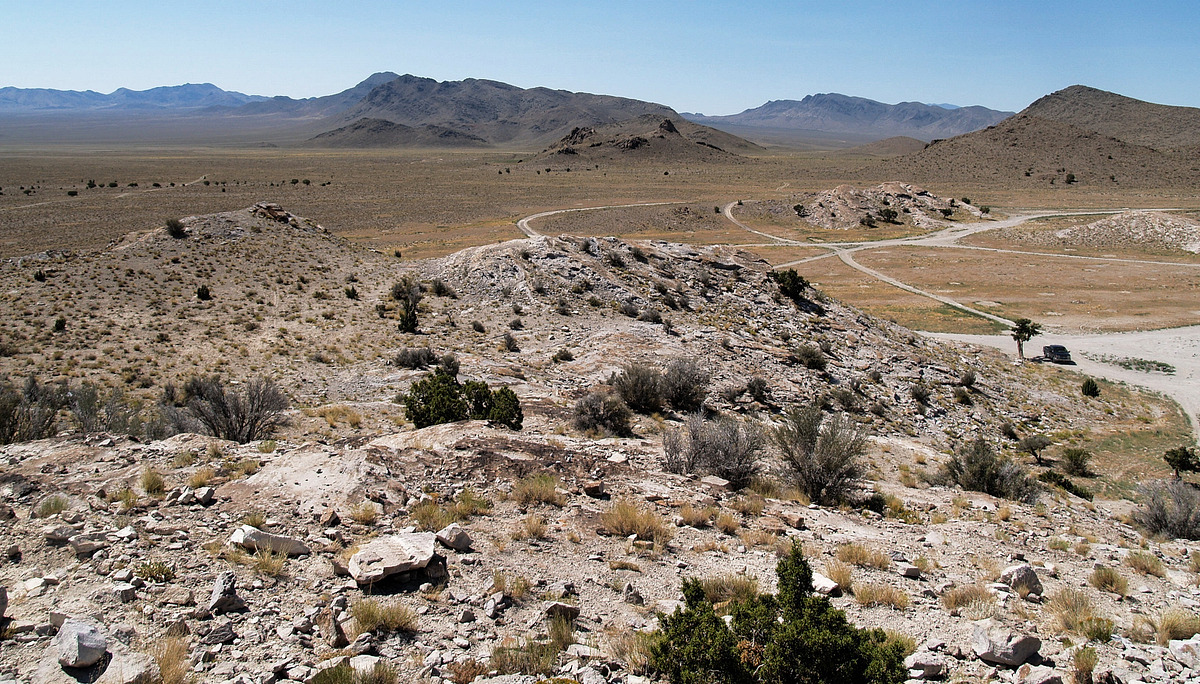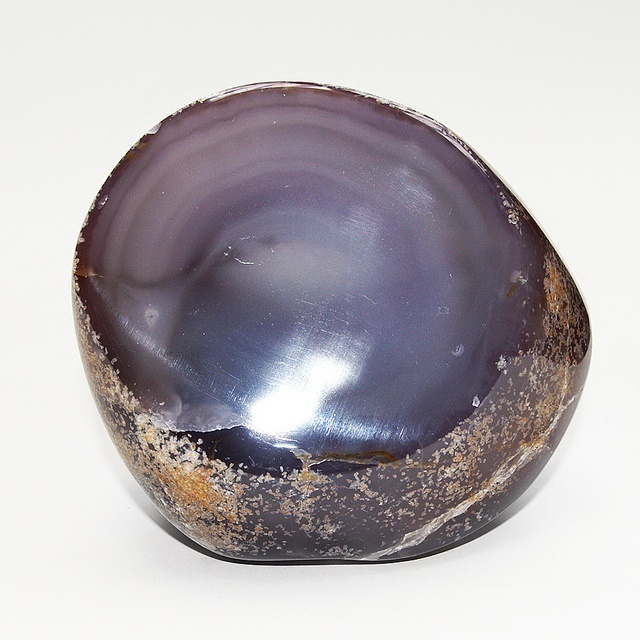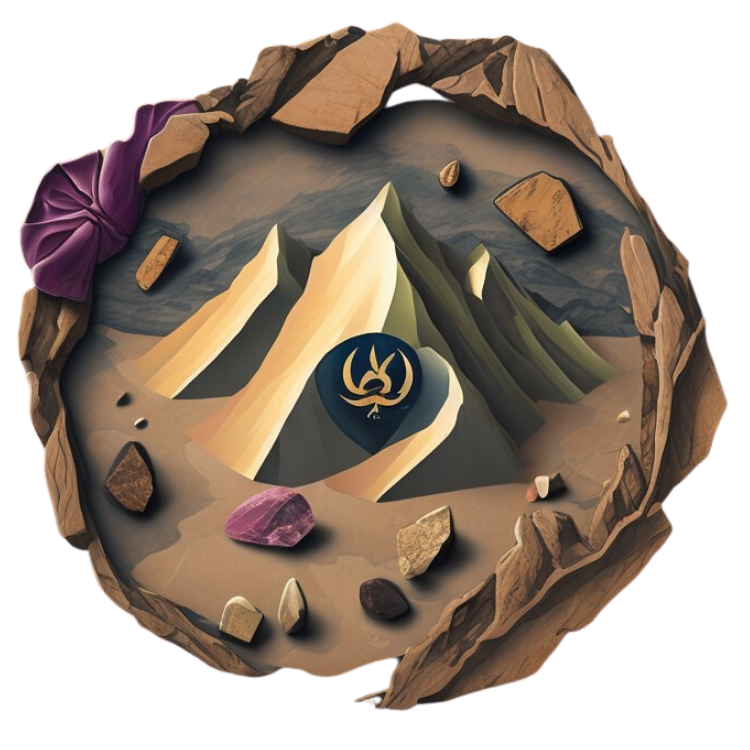Places to Find Geodes Near Me: A Comprehensive Guide to Geode Hunting in the US
Click here to see our crystal hunting maps
Geodes are fascinating and unique geological formations that have captivated people for centuries. These natural wonders, filled with sparkling minerals and intricate crystal formations, can be found in various locations worldwide. In this comprehensive guide, we will explore the topic of finding geodes near you. Whether you are a geology enthusiast, rock collector, or simply curious about these beautiful formations, this guide will provide you with valuable information on where to find geodes, how to identify them, and the various techniques for collecting, cutting, and polishing these rare and unusual geological treasures.
What are Geodes?
Before we delve into the various locations to find geodes near you, let's first understand what geodes are. Geodes are essentially spherical or oblong rocks with hollow cavities lined with mineral deposits, often in the form of crystals, their true magic lying within. These cavities are typically found in sedimentary or volcanic rocks and can range in size from a few centimeters to several meters in diameter. Geodes come in a variety of shapes and can contain a wide range of minerals, including quartz, amethyst, calcite, and agate.
Over millions of years, mineral-rich water infiltrates these voids, depositing layers of minerals that gradually crystallize. The result? A breathtaking display of amethyst, quartz, calcite, or other mesmerizing crystals, hidden beneath an unassuming exterior.
Geodes owe their existence to geological processes, primarily volcanic or sedimentary activity. Volcanic geodes form when gas bubbles within lava cool and solidify, leaving behind cavities. Sedimentary geodes, on the other hand, often originate in limestone deposits, where dissolved minerals precipitate within voids left by decomposing organic matter.
Types of Geodes
Geodes are a diverse family, each member boasting its unique crystalline treasures:
- Amethyst Geodes: Revered for their captivating purple hues, amethyst geodes are among the most sought-after varieties. The deep purple color is attributed to trace amounts of iron within the crystal lattice. Amethyst geodes are often associated with tranquility and spiritual healing.
- Quartz Geodes: Quartz, the most abundant mineral on Earth, comes in various forms within geodes. Clear quartz, known as rock crystal, is prized for its clarity and brilliance. Smoky quartz exhibits a captivating smoky brown hue, while milky quartz possesses a cloudy white appearance.
- Calcite Geodes: Calcite geodes feature white or clear calcite crystals, which are renowned for their double refraction property, splitting light into two rays and creating a fascinating visual effect.
- Celestine Geodes: These geodes house delicate blue celestine crystals, prized for their ethereal beauty and association with heavenly energies.
- Agate Geodes: Agate geodes are characterized by banded formations of agate, a type of chalcedony with intricate patterns and varying colors. The banding occurs due to changes in mineral composition during the geode's formation.
Each type of geode holds its allure, making the hunt for these natural wonders all the more exciting.
Where to Find Geodes
Geodes can be unearthed in numerous corners of the globe, but certain regions are particularly renowned for their geode abundance.

Geodes in the US
The United States boasts a treasure trove of geode-rich locations, varying in the types of geodes they yield:
- Midwest: The Keokuk region, spanning Iowa, Illinois, and Missouri, is famous for its quartz-filled geodes. These geodes are often found in limestone deposits and can reach impressive sizes.
- Southwest: Arizona, New Mexico, and Utah are hotbeds for volcanic geodes, particularly those containing amethyst and agate. The unique geological history of the Southwest has created ideal conditions for geode formation.
- Southeast: The Appalachian Mountains harbor geodes with diverse mineral compositions, including quartz, calcite, and dolomite. The varied geology of the region contributes to the diversity of geode types found here.
Geode-Rich States
Within the US, specific states stand out as havens for geode enthusiasts:
- Arizona: The Grand Canyon State is home to a variety of geode species. The Black Hills Rockhound Area and the Saddle Mountain geode beds are renowned for their amethyst-filled geodes. The Hauser Geode Beds near Blythe are legendary for their amethyst-laden geodes, often called "thunder eggs" due to their rough exterior.
- Iowa: Dubbed the "Geode State," Iowa's landscape is dotted with geode-bearing limestone formations. The Keokuk region is particularly famous for its quartz-lined geodes. Riverbanks and creek beds are excellent places to search for geodes in this area. Public areas like Geode State Park offer opportunities for collecting.
- Kentucky: The Bluegrass State boasts an abundance of geode hunting opportunities. Popular areas include the Mammoth Cave region, where geodes can be found along riverbanks, and the Fort Knox area, known for its calcite-filled geodes. The Fort Payne Formation, a geological formation spanning Kentucky and Tennessee, is a repository of quartz geodes.
- Utah: The West Desert region of Utah is known for its world-class geode beds. Dugway Geode Beds and Topaz Mountain are popular areas to find geodes, including rare red-banded geodes. The Dugway Geode Beds present a unique geological landscape where you can unearth one-of-a-kind geodes with unusual mineral compositions.
- Indiana: The Hoosier State is a hidden gem for geode enthusiasts. Sites such as the Geode Gorge near Bedford and Falls of the Ohio State Park offer ample opportunities for geode hunting.
- California: The Wiley Well district in the Mojave Desert is another prime destination for amethyst geodes, formed within volcanic rocks.
Other Notable Geode Locations Worldwide
Beyond the United States, geodes can be found in several international locales:
- Brazil: This South American country is a world leader in amethyst production, with vast deposits of amethyst geodes found in volcanic rocks.
- Uruguay: Uruguay is renowned for its agate geodes, exhibiting mesmerizing banded patterns in various colors.
- Namibia: The deserts of Namibia yield calcite geodes with remarkable crystal formations.
- Mexico: A diverse range of geodes can be found in Mexico, including fire agate and quartz varieties.
Geode Hotspots Near Me
The quest for geode hotspots near you can be an adventure in itself. Fortunately, numerous resources can guide you to geode-rich locations:
- Online geode maps and guides: Websites like Rockhounding.org and DesertUSA offer comprehensive information on geode-hunting sites across the United States, complete with detailed maps and descriptions.
- Local rock shops: Rock shops are treasure troves of information for rockhounds. Inquire about nearby geode locations or ask for recommendations from knowledgeable staff.
- Geode-hunting forums and groups: Online communities dedicated to rockhounding are excellent platforms for connecting with fellow enthusiasts, sharing tips, and learning about new locations.
- State geological surveys: Many states have geological survey departments that offer resources on the state's geology, including information on where to find geodes.
By utilizing these resources, you can pinpoint geode-rich areas near you and increase your chances of a successful hunt.
Identifying Geodes
Identifying geodes in their natural habitat requires a keen eye and a bit of knowledge. Look for these telltale signs:
- Shape: Geodes often have a roughly spherical shape, although they can also be oval or elongated. Their outer surface is usually weathered and rough.
- Texture: The exterior surface of a geode is often rough, bumpy, or cauliflower-like in appearance.
- Weight: Geodes are surprisingly heavy for their size due to the dense crystal formations within.
- Sound: Gently shaking a suspected geode can give you an indication of whether it is hollow or not. If you hear a rattling sound, it suggests that there may be crystals inside.
- External Features: Look for indications of potential geode sites, such as cracks or seams in rocks, exposed layers in cliffs, or areas of recent erosion.
If you encounter a rock that piques your suspicion, carefully chip off a small piece. If the interior reveals sparkling crystals, you've struck geode gold!
Collecting, Cutting, and Polishing Geodes
Once you have successfully located a geode, the next step is to collect it and, eventually, unveil its hidden beauty. Collecting and preparing geodes can be a meticulous process but is immensely rewarding. Here is a step-by-step guide to collecting, cutting, and polishing geodes:
Collecting Geodes
- Permission: Ensure you have the necessary permission to collect geodes from the specific location you are exploring. Many sites have policies in place to protect the environment and the local geology.
- Tools: Equip yourself with essential tools such as a rock hammer, chisel, safety goggles, gloves, and sturdy shoes. These tools will assist you in breaking open the geode without damaging its crystals.
- Safety: While collecting geodes, it is crucial to prioritize safety. Be aware of potential hazards, such as loose rocks, steep terrain, and unexpected weather changes.
- Ethics: Practice ethical collecting by taking only what you need and leaving the surrounding environment undisturbed. Avoid damaging the geode or the surrounding rocks during extraction.
Cutting Geodes
- Safety: Wear safety goggles and gloves to protect yourself from flying debris. Cutting geodes can create shards and fragments that may cause injury if not handled carefully.
- Equipment: Use a diamond saw or a lapidary saw to cut the geode in half. These specialized tools are designed to cut through the tough outer layer of the geode without damaging the crystals inside.
- Technique: Carefully position the geode on the saw and make a slow, steady cut along its circumference. Avoid putting excessive pressure on the saw blade and let it do the work.
- Polishing: After cutting the geode, you can use a rock tumbler or hand polish the exposed crystals to bring out their natural luster and beauty. Follow the instructions provided with the rock tumbler or use fine-grit sandpaper for manual polishing.
- Display: Once polished, your geodes are ready to be showcased. Place them on shelves, stands, or in decorative bowls to highlight their natural beauty.
Tools and Equipment for Geode Hunting
Equipping yourself with the right tools can enhance your geode-hunting endeavors:
- Rock hammer or chisel: These tools are essential for cracking open geodes. Choose a hammer or chisel with a sturdy handle and a sharp edge for optimal results.
- Safety goggles: Protect your eyes from rock fragments that may fly off when breaking geodes.
- Gloves: Sturdy gloves shield your hands from sharp edges and prevent blisters from forming during prolonged digging.
- Bucket or backpack: A sturdy container is essential for carrying your geode finds. A backpack with multiple compartments can be useful for organizing tools and specimens.
- Magnifying glass: A magnifying glass allows you to examine the crystals within your geodes in detail, revealing their intricate beauty.
Geode Hunting Tips and Tricks
Increase your chances of a successful geode-hunting excursion with these insider tips:
- Research: Delve into the geology of your chosen region to identify areas with promising geode potential. Geological maps, guidebooks, and online resources can provide valuable information.
- Look for clues: Geodes are often found in areas with exposed rock formations, such as riverbeds, quarries, and road cuts. Keep an eye out for roundish rocks with rough textures.
- Network: Connect with fellow rockhounds, geologists, and local experts who can share insights into prime geode-hunting spots. Join rockhounding clubs or online forums to tap into a wealth of knowledge.
- Time your visits: Certain times of the year, like after heavy rains or during low tide in coastal areas, can expose geodes that were previously hidden.
- Don't be discouraged: Geode hunting requires patience and perseverance. Not every outing will yield a treasure trove, but the thrill of the hunt and the joy of discovery make it a rewarding endeavor.
Geode Hunting Etiquette
Like every other rockhounding activity, responsible geode hunting goes hand in hand with respecting the environment and fellow enthusiasts. Here are some etiquette tips to keep in mind:
- Leave no trace: Pack out any trash you generate and avoid disturbing the natural landscape. Leave the area as you found it, or even better, leave it cleaner than you found it.
- Respect private property: Always seek permission before entering private land to search for geodes. Trespassing is not only unethical but can also lead to legal consequences.
- Share the wealth: Avoid over-harvesting from a single location. Leave some geodes for others to discover and enjoy.
- Educate others: Share your knowledge and passion for geode hunting with others, encouraging responsible collecting practices and appreciation for these natural wonders.
By adhering to these principles, you can ensure that geode hunting remains a sustainable and enjoyable activity for generations to come.
Rare and Unusual Geodes

While geodes with common minerals like quartz and calcite are abundant, some hold extraordinary formations that are highly coveted by collectors:
- Oco Agate Geodes: These Mexican geodes contain vibrant, swirling patterns of agate, formed over millions of years as mineral-rich solutions seeped into cavities.
- Enhydro Geodes: Enhydro geodes contain pockets of water trapped within the crystals, creating a miniature world within the geode. These are geological time capsules, preserving ancient water and sometimes even microscopic organisms.
- Keokuk Geodes: These geodes from Iowa often contain quartz crystals with stunning colors such as purple, pink, and yellow. The hollow cavities are lined with intricate crystal formations, creating a unique and visually appealing specimen.
- Coconut Geodes: Found in Brazil, these geodes resemble coconuts due to their external appearance. Once cracked open, they reveal striking amethyst crystals that are highly valued for their beauty and rarity.
- Mexican Lace Geodes: Resembling delicate lacework, these geodes from Mexico are famous for their intricate crystal formations. They often contain calcite crystals that form delicate and intricate patterns within the geode.
- Geodes with Fossil Inclusions: In rare instances, geodes may encase fossilized remains of ancient organisms, providing a glimpse into prehistoric life.
The rarity of these unusual geodes adds to their allure and makes them prized possessions for collectors.
Uses of Geodes
Geodes are not only admired for their aesthetic appeal but also find practical applications:
- Jewelry: Geode slices, polished crystals, and even entire geodes are incorporated into jewelry designs. Their natural beauty and unique patterns make them sought-after adornments.
- Home decor: Geodes make stunning decorative pieces, adding a touch of natural elegance to homes and offices. They can be displayed on shelves, mantels, or coffee tables, serving as conversation starters and focal points.
- Metaphysical properties: In various spiritual traditions, geodes are believed to possess healing energy and promote harmony. They are often used in meditation practices and crystal healing therapies.
The versatility of geodes extends beyond aesthetics, making them cherished objects for both their beauty and potential energetic properties.
Conclusion
Geodes are natural wonders that never fail to fascinate us. Whether you are an avid collector or simply appreciate the beauty of these geological formations, knowing where to find geodes near you opens up a world of exploration and discovery. By understanding how to identify and collect geodes, as well as the techniques for cutting and polishing them, you can turn these unassuming rocks into dazzling displays of natural wonder. So, grab your tools, head out to the geode hotspots mentioned in this guide, and uncover the hidden treasures that lie hidden within these beautiful rock formations. Happy geode hunting!
